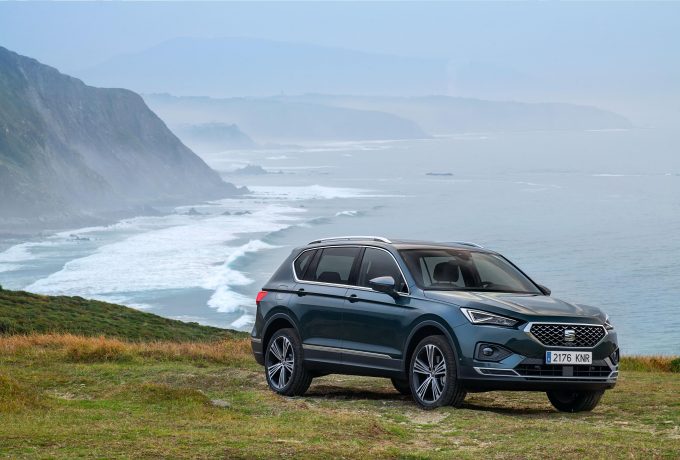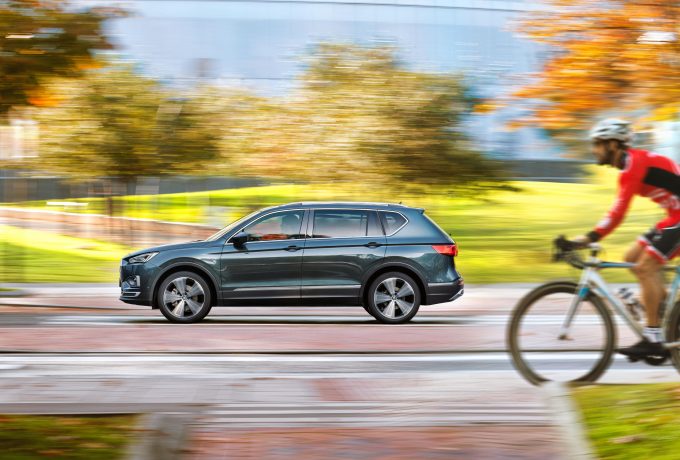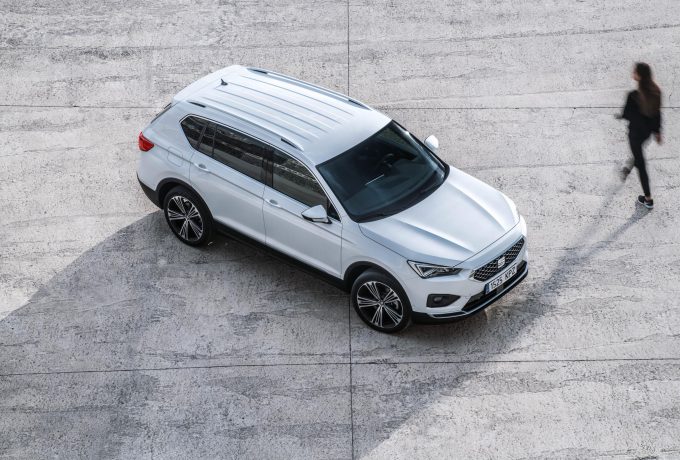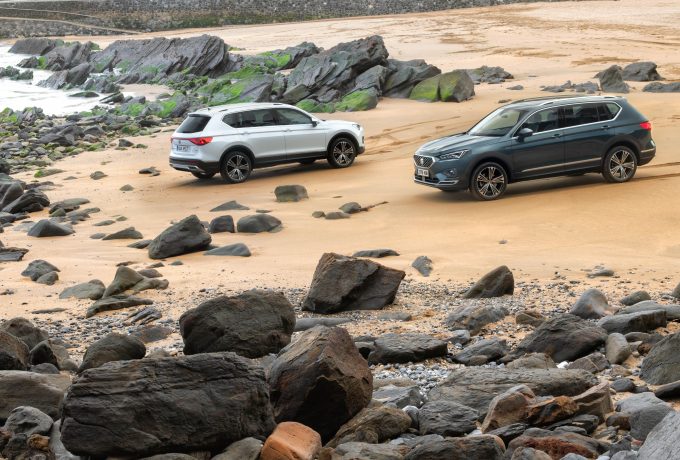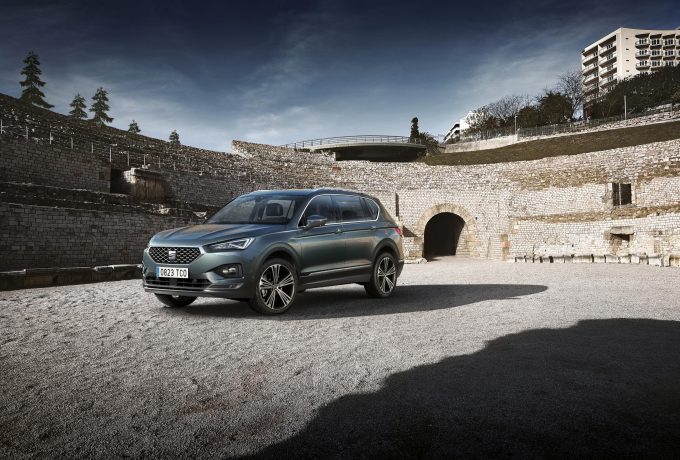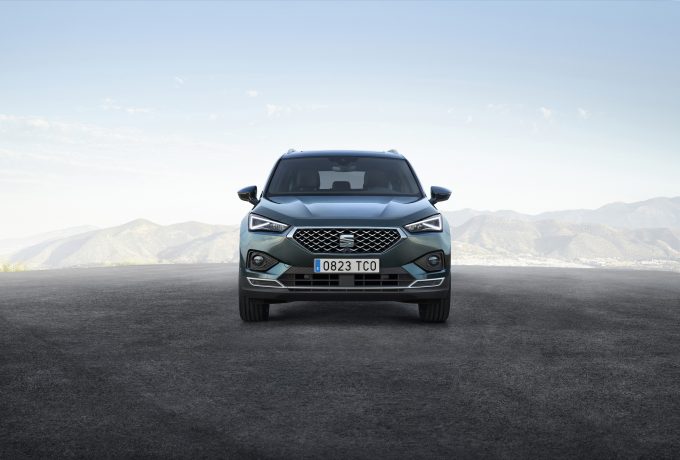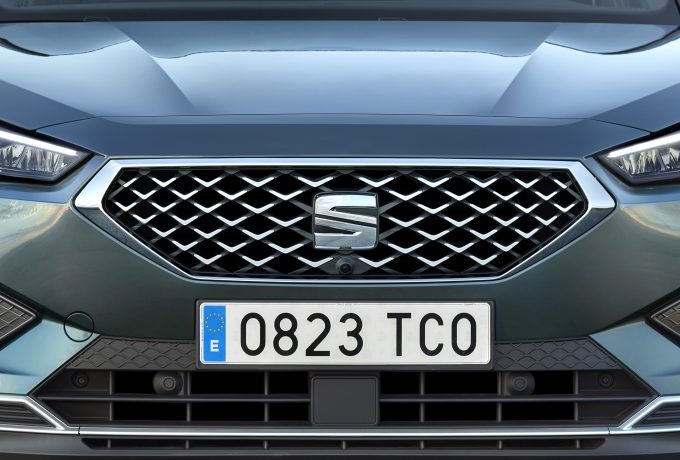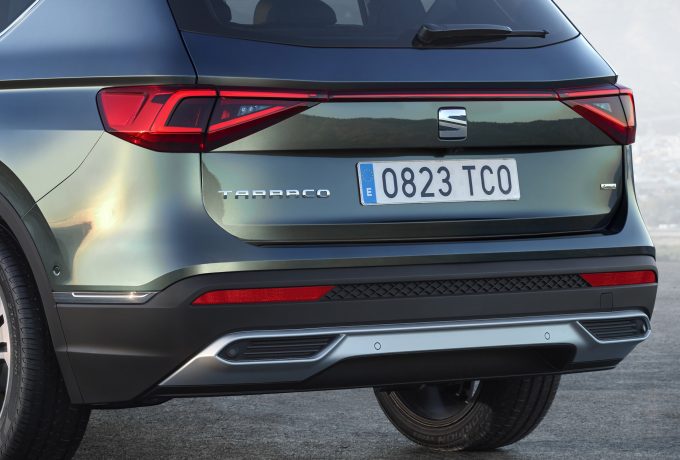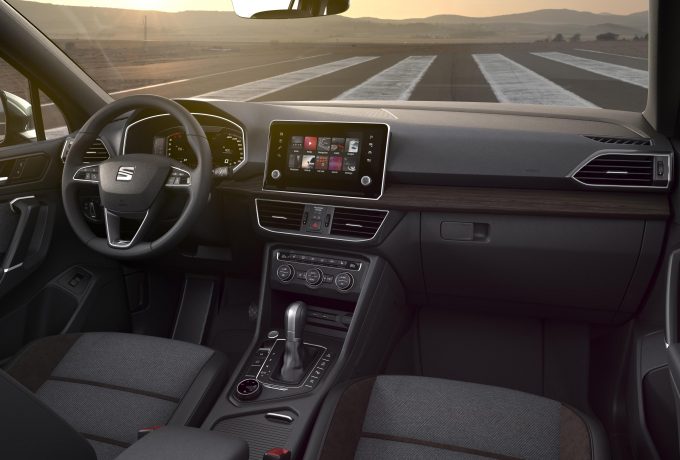Their first entry into the large SUV sector, the seven-seat Tarraco completes Seat’s sports utility line-up and will come to market at the start of 2019.
Becoming the new flagship model, the Tarraco sits above the Arona and Ateca in Seat’s hierarchy, there are two petrol and two diesel powertrains to choose from.
The petrol units on the table are a 150bhp 1.5-litre TSI unit available with a six-speed manual ‘box, and a 2.0-litre version offering 190bhp that’s mated to a seven-stage DSG auto and four-wheel drive. On the other front, both of the diesel blocks are 2.0-litre TDIs, also offering either 150 or 190bhp. The lesser diesel can be front or four-wheel drive with either of the transmission options, whilst the punchier version gets both the DSG and drive to all of its wheels.
MacPherson strut system underpins the front of the Tarraco, with a multilink setup at the back, with the aim of giving the big wagon a dependable stability and responsiveness to the driver’s controls whilst having the size and space to seat seven and serve compellingly as a family chaperone.
Interior features include digital cockpit and a 10.25″ screen for the driver and an 8″ touchscreen infotainment that adorns the central dashboard. The system features both Apple CarPlay and Android Auto, and there is also a seat Drive App which allows users to stay in touch with their vehicle’s information and control various features. Amazon Alexa is also available on the Tarraco, allowing customers to manage their personal schedule, select music, navigate with ease and even ask for news updates. Oh how 21st century.
Pinned as a capable family vehicle, the amount of safety equipment on the Tarraco is certainly pleasing. Front assist with bicycle detection, plus lane assist and emergency call are standard on all Tarraco models. Adaptive cruise control is standard on Xcellence trim variants, and emergency assist, blind spot detection, exit assist, traffic sign recognition , traffic jam assist and light assist can all be optioned. The Tarraco can also be fitted with two new systems – pre-crash assist (like on the new Touareg) and rollover assist. The pre-crash system detects an incident, and in 0.2 seconds tightens the seatbelts, closes the windows and sunroof to make the passenger compartment as safe as possible. Rollover assist, when activated by the occurrence of a roll, turns off the engine, unlocks the doors, turns on the hazards and adjusts the ventilation system.
Other systems that can make life easier for Tarraco drivers include the park assist, electric tailgate featuring virtual pedal activation, and a top view camera system.
Pre-sales of the Tarraco will begin in December, and the car will hit the market early next year.

